Community Time Capsule: African American
While people of African descent have been in Western Pennsylvania since the 1750s, the population of this community began to increase dramatically in the early decades of the twentieth century. As World War I ended, the flood of European immigrants that had been coming to this region, and industrial jobs began opening to African Americans. This economic opportunity fueled the Great Migration from southern rural states to northern industrial cities. Each year, more African Americans came from places such as Alabama, Georgia, Tennessee, Kentucky, Virginia, West Virginia, and the Carolinas, settling in the Hill District, Homestead, Lawrenceville, Braddock, and the North Side. They worked in steel mills, in domestic services, and as professionals. From 1870 to 1900 the African American population in Allegheny County grew from around 4,500 to more than 20,000 people; between 1910 and 1950, it more than tripled to over 80,000 people. This Great Migration led to a social, cultural, and political awakening in Pittsburgh. African American-owned businesses and agencies supported the growing community by establishing churches, clubs, and organizations. The objects in this Time Capsule represent the fabric of the community that was built here over time, and serve as reminders of the people and institutions that flourished in this region.
Clothing and Apparel
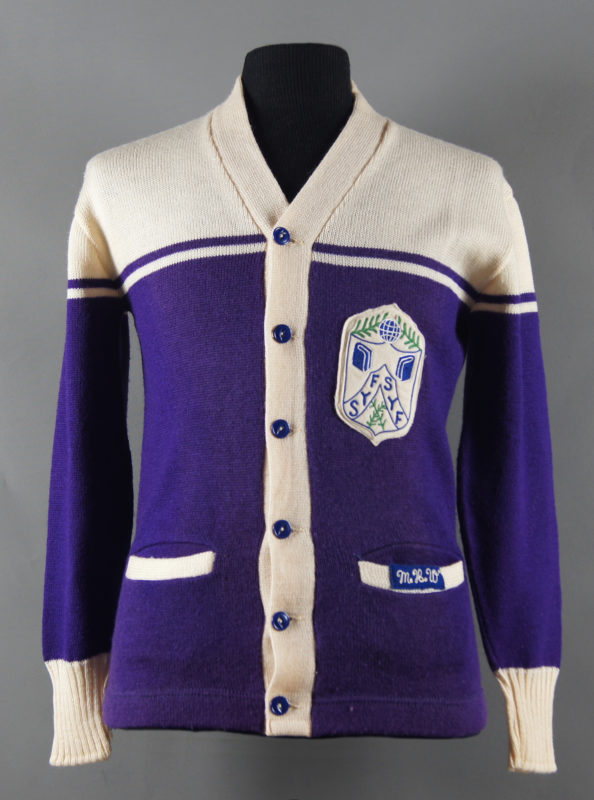
Spicer Youth Forum Sweater, Senator John Heinz History Center, Gift of Mamie H. W. Clemons
Spicer Youth Forum Sweater
A sweater worn by Mamie H. Wadkins who co-founded the Spicer Youth Forum (SYF) in 1945 with her husband, James Wadkins. The mission of the SYF was to “develop high character, be prepared mentally and physically, encourage individual talent, and assist with scholarship opportunities.”
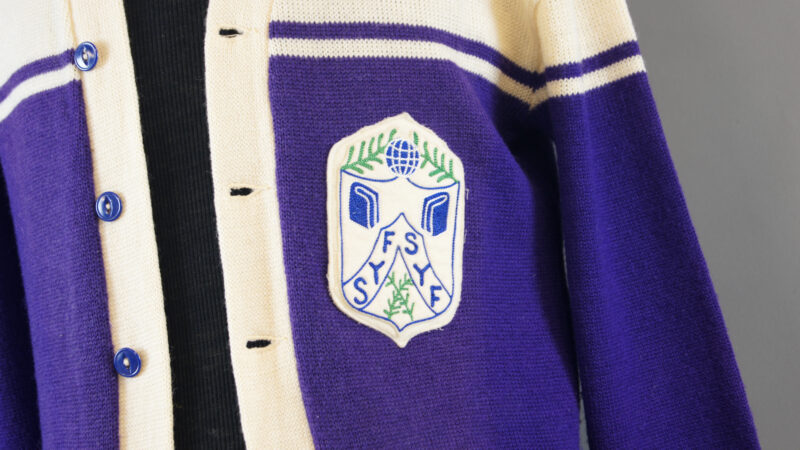
Spicer Youth Forum Sweater: Close-Up, Senator John Heinz History Center, Gift of Mamie H. W. Clemons
Spicer Youth Forum Sweater (close-up)
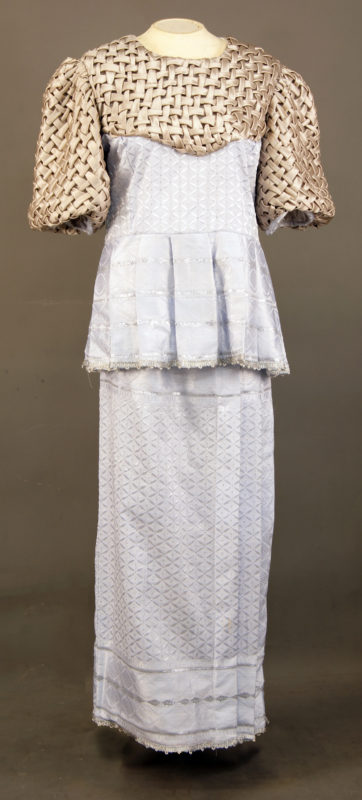
Kaba with Skirt, Senator John Heinz History Center, Museum purchase, 2003.133
Kaba with Skirt, 2003
Dosina Blemahdoo is a Ghanaian immigrant who moved to Western Pennsylvania in the 1970s and soon opened a dress shop in Homestead. Her creations feature both traditional and contemporary African styles. They have been featured in fashion shows and educational programs about African culture and dress.
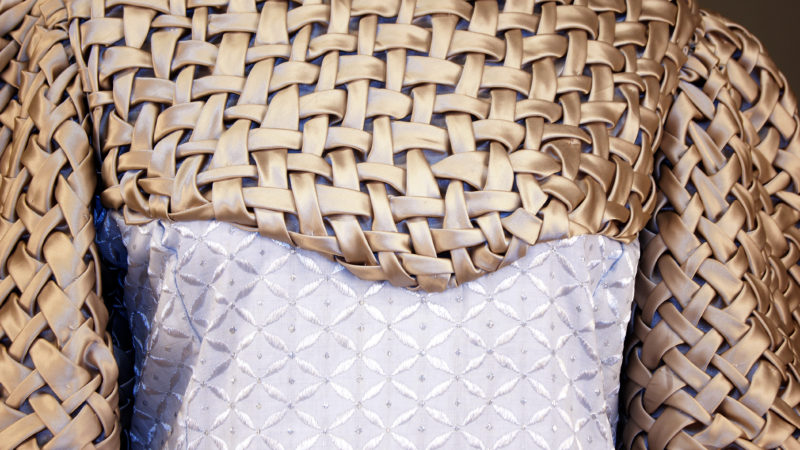
Kaba with Skirt: Bodice Detail, Senator John Heinz History Center, Museum purchase, 2003.133
Kaba with Skirt: Bodice Detail
Blemahdoo’s designs are used in weddings, funerals, rituals, social events, and everyday dress. This Kaba with skirt is made from satin with a handwoven bodice and puffed sleeves typical of traditional West African dress.
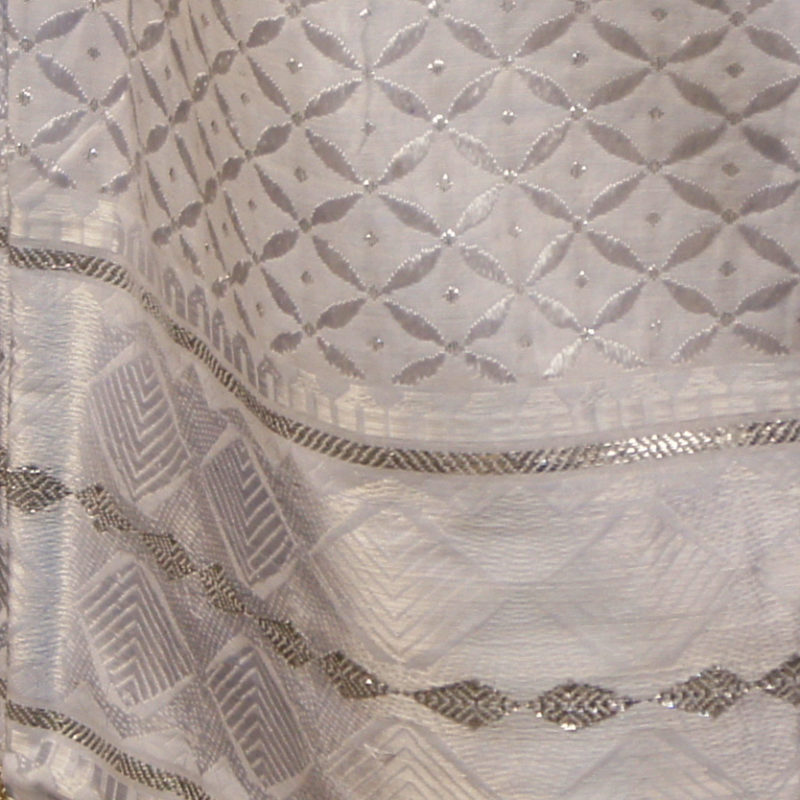
Kaba with Skirt: Hem Detail, Senator John Heinz History Center, Museum purchase, 2003.133
Kaba with Skirt: Hem Detail
Records, News, and Events
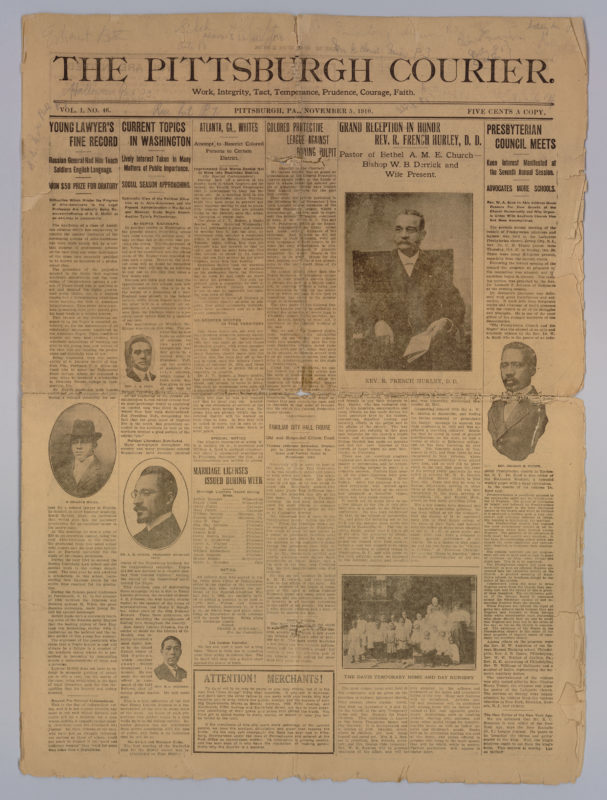
The Pittsburgh Courier
The Pittsburgh Courier
In the early 1900s the African American population in Pittsburgh swelled as migrants streamed north to Western Pennsylvania in search of opportunity—jobs in industry, equality, and freedom. This ever-increasing community offered fertile ground for a newspaper that reported the news of the world, as well as the challenges and advancements of their race. Established during this time of change and struggle, The Pittsburgh Courier grew to become the most widely-circulated African American weekly newspaper of the 20th century. With twenty one national editions, subscriptions climbed by 1947 to more than 350,000, with nearly 1,000,000 readers a week worldwide. The Courier’s reporting and editorials have influenced and informed the lives of African Americans for more than 100 years.
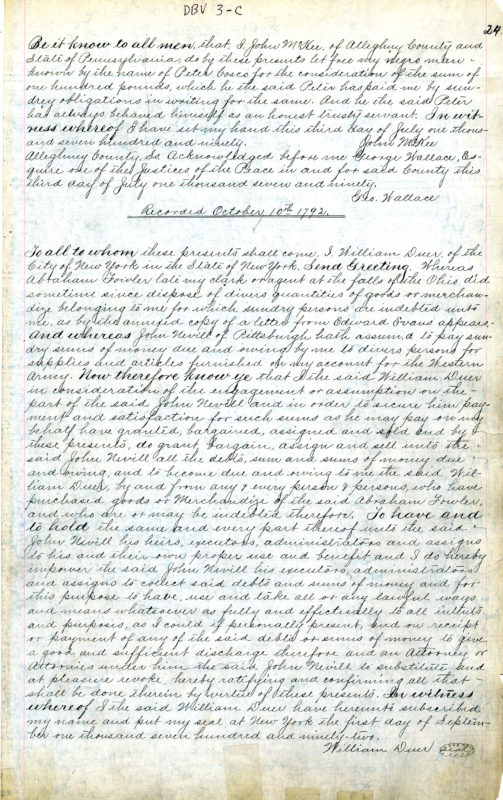
Peter Cosco Manumission Papers, 1792
Manumission Papers of Peter Cosco, 1792
This paper is part of a set of documents found in the Allegheny County deeds office that served as certificates of freedom for African Americans. These papers were legal documents that verified the free status of Blacks, revealing a past of local slave trading and slaveholding. Antebellum America, including Western Pennsylvania, was hostile territory for a person of African descent. Freedom papers such as these were important because “free people of color” lived with the constant fear of being kidnapped and sold into slavery. Legal freedom could be obtained in a variety of ways; in this document, Peter Cosco was set free in 1790 by his slaveholder John McKee, the founder of McKeesport, through self-purchase. Cosco paid McKee £100 to buy his own freedom through “sundry obligations.” More information about the Freedom Papers, along with images and transcripts, can be found at the University of Pittsburgh.
Photography
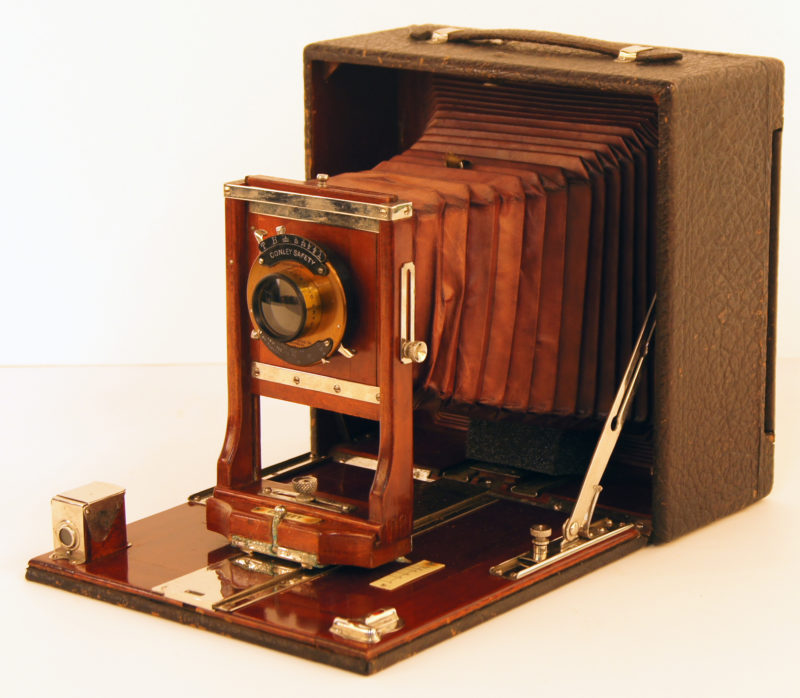
Teenie Harris Camera, Senator John Heinz History Center, Gift of the family of Charles “Teenie” Harris, 2002.13
Teenie Harris Camera
This photographic camera belonged to Charles “Teenie” Harris. The Conley Safety camera was manufactured in Chicago, Illinois and Rochester, New York for Sears, Roebuck and Company. This particular camera has a lens manufactured by the Wollensak Optical Company in Rochester, New York.

Teenie Harris Camera: Front View, Senator John Heinz History Center, Gift of the family of Charles “Teenie” Harris, 2002.13
Teenie Harris Camera (front view)
Charles “Teenie” Harris began his career in 1930 primarily as a staff photographer for the Pittsburgh Courier in the 1930s. His career lasted well over sixty years, during which time he took some of the most poignant images depicting African American life in mid-twentieth century Pittsburgh. His images often accompanied articles written by Frank Bolden, John Clarke, and Bill Nunn, Sr. Harris also worked as a freelance photographer and operated a studio, first out of a home he shared with his mother Ella in Homewood, and then in a studio on Centre Avenue in the Hill District.
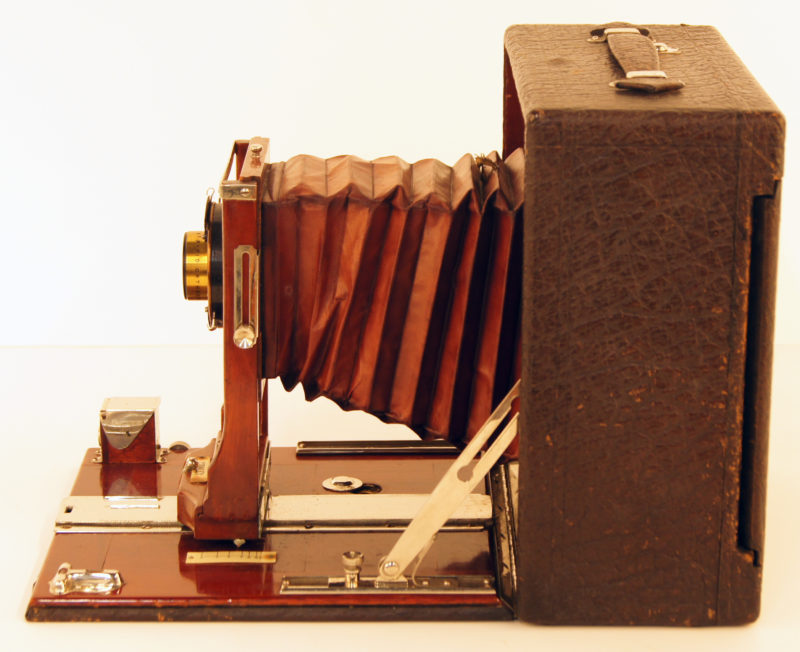
Teenie Harris Camera: Side View, Senator John Heinz History Center, Gift of the family of Charles “Teenie” Harris, 2002.13
Teenie Harris Camera (side view)
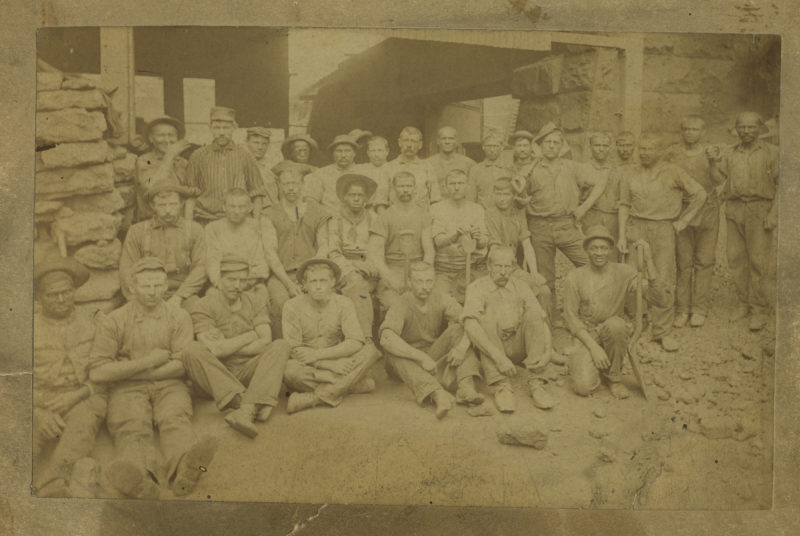
Eliza Furnace Crew, Jones & Laughlin Steel Co., South Side, Pittsburgh, c. 1890
Eliza Furnace Crew, Jones & Laughlin Steel Co., South Side, Pittsburgh, c. 1890
In 1892 the Homestead Works steel plant workers went on strike. The managers of the mill decided to bring in strikebreakers, hiring African American steelworkers to cross the picket lines. Although African American workers were used during the strike, this image shows that few actually held positions in the region’s steel mills. But as the industry grew, so too did the number of black workers. By the 1920s, more than 3,000 African Americans worked for J & L Steel, and 6,000 at Carnegie Steel.
Tools & Work
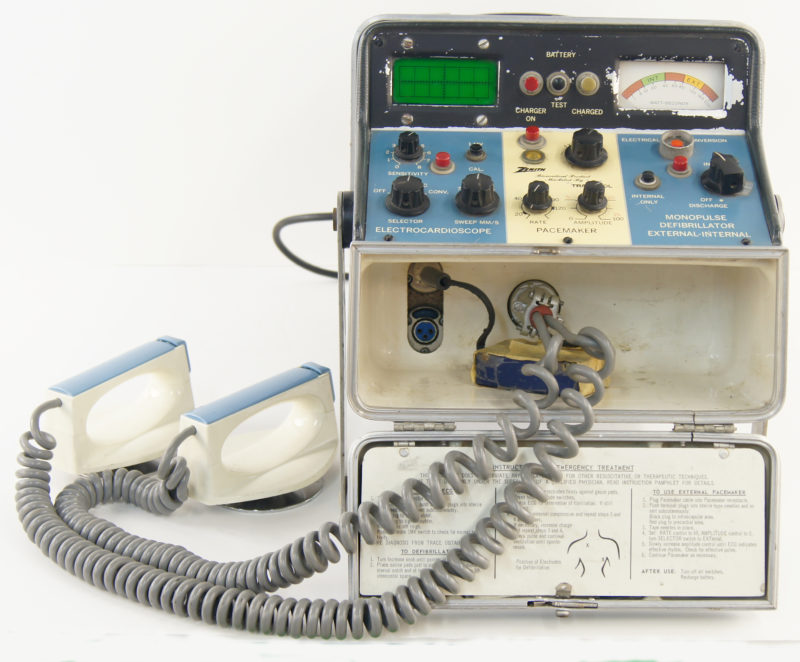
Defibrillator, Senator John Heinz History Center, Gift of Roy E. Cox, 97.45
Defibrillator
A defibrillator is a cardiac (heart) monitor used in emergency service to detect and monitor heart rates for emergency patients. This defibrillator was owned and operated by the Freedom House Ambulance Service, which started in 1967 as a non-profit service to the Hill District. Based at Presbyterian Hospital, the service was initiated with support from the Port Authority and the Model Cities neighborhood program. Before the service’s inception, calls for emergency medical assistance in the Hill District were returned with silence, delayed responses, or inadequate care.
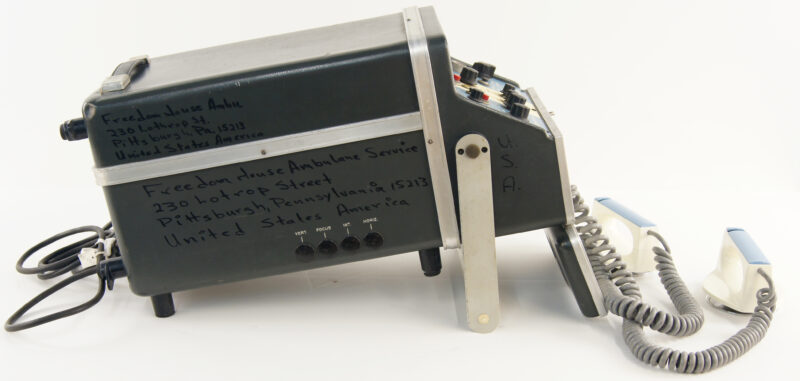
Defibrillator: Side View, Senator John Heinz History Center, Gift of Roy E. Cox, 97.45
Defibrillator (side view)
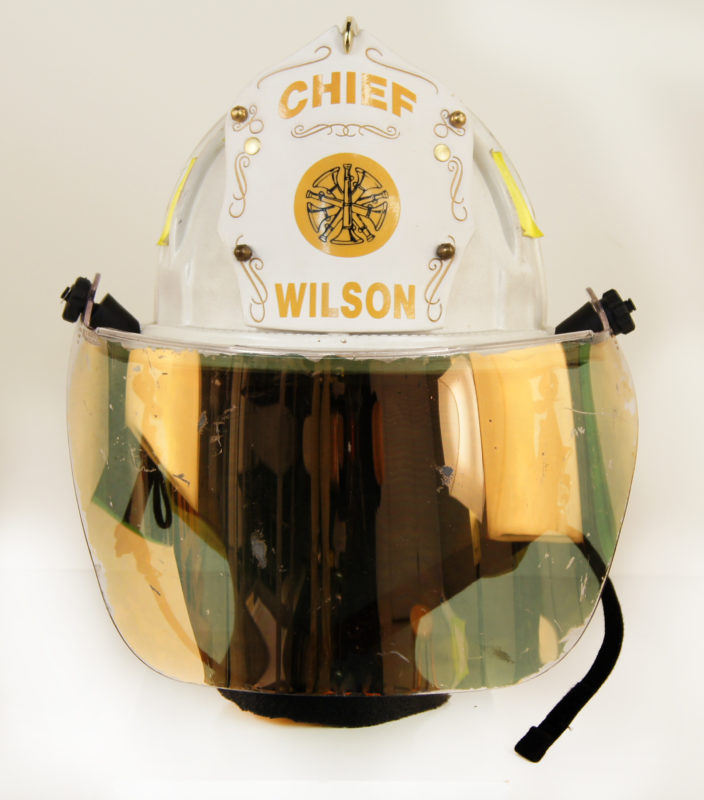
Firefighter's Helmet, c. 1996, Senator John Heinz History Center, Gift of Lamonte E. Wilson, 2004.123
Firefighter’s Helmet, c. 1996
This helmet belonged to Allegheny County Airport Authority Fire Chief Lamonte E. Wilson. In 1996, Wilson became the first African American fire chief in Allegheny County. He joined the Pittsburgh Fire Department in 1975, eventually becoming a Captain and Communications Officer. A native of Pittsburgh and graduate of Westinghouse High School, Point Park College, and Community College of Allegheny County, Wilson is a U.S. Coast Guard veteran and a member of various professional fire protection organizations.
Community and Traditions
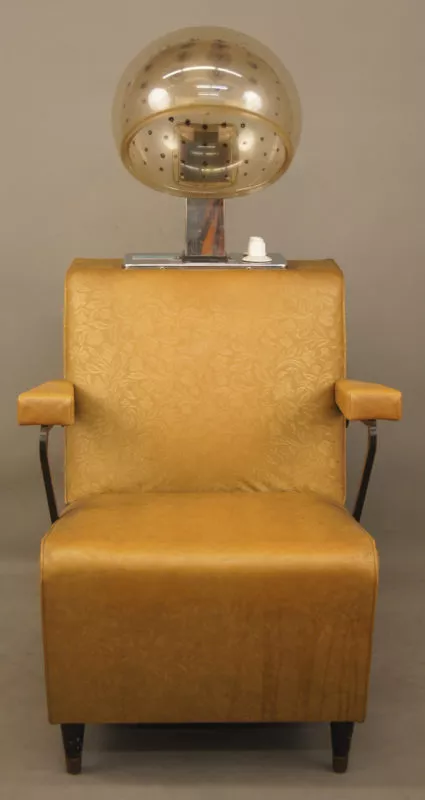
Salon Chair, 1970s, Senator John Heinz History Center, Gift of Marsha V. Lambria, 2008.33
Salon Chair, c. 1970s
Gloria Grate Giddens was the first African American graduate of the Earl Wheeler Finishing and Modeling School. She opened her first hair salon in the Hill District in the early 1950s, followed by Pittsburgh’s first wig salon on Centre Avenue. Gidden’s businesses expanded to include clothing and her own line of cosmetics. She sponsored charm schools for girls at the Hill District YMCA and participated in annual hair shows at Schenley High School and other Hill District venues.
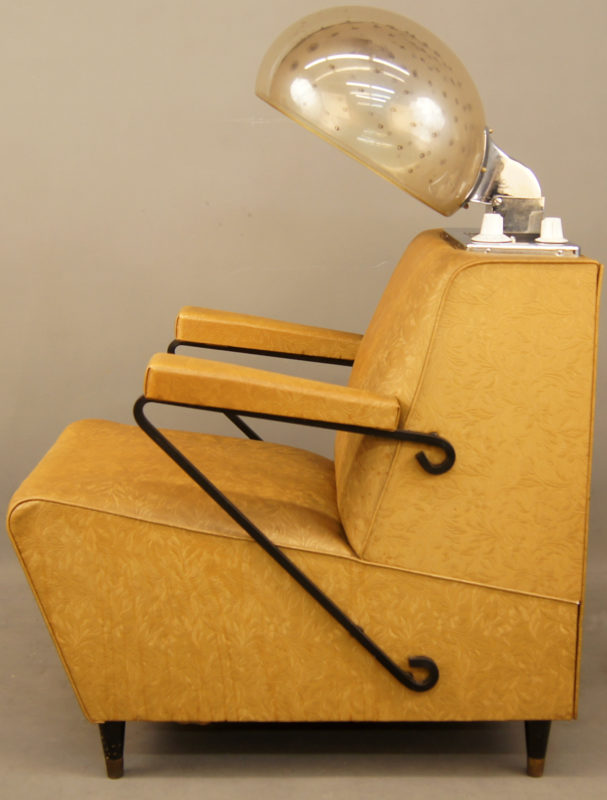
Salon Chair: Salon Chair, Side View, 1970s, Senator John Heinz History Center, Gift of Marsha V. Lambria, 2008.33
Salon Chair, c. 1970s (side view)
Recognized as one of the premier African American fashion models in the city, Giddens was often featured in the Pittsburgh Courier as one of the city’s best-dressed women. This salon chair was from her last salon, located on Kelly Street and North Dallas Avenue in Homewood.
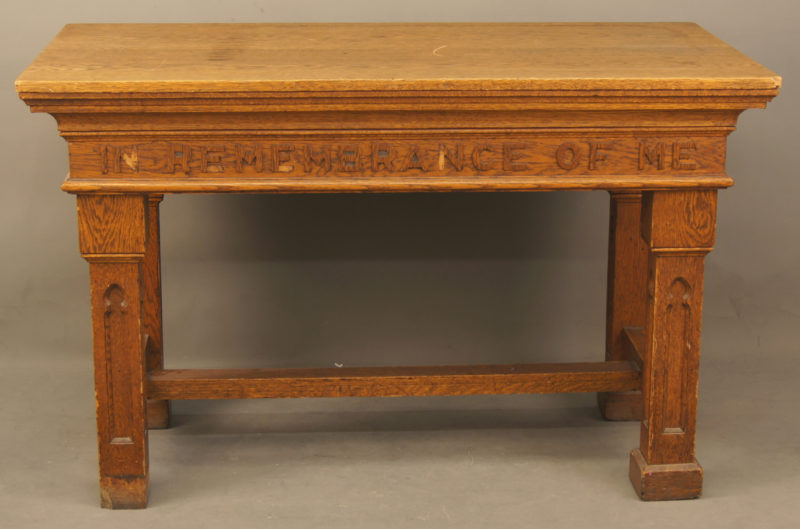
Communion Table, 1915, Senator John Heinz History Center, Gift of Russell Freeman, 92.76
Communion Table, 1915
This communion table is from the Second Baptist Church in Homestead, Pennsylvania. In 1905, Second Baptist was formed as a mission for African Americans who settled in Homestead’s First and Second Wards. Many of the male congregants were steelworkers. Originally located at 226 Sixth Avenue, the Second Baptist Church moved more than five times between 1905 and 1915 before securing a permanent home. Congregants carried this oak communion table, used during Sunday services, to each new location. The words “In Remembrance of Me” are nailed into the front panel.
Sports and Games
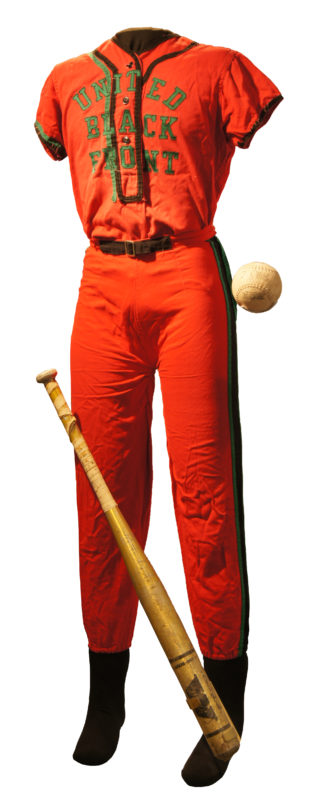
Women's Softball Uniform, c. 1970
Softball Uniform, c. 1970
This women’s softball uniform is from a team sponsored by the United Black Front—a Black cultural nationalist organization involved with progressive community activities, including economic development and civil rights. The team played in the Tri-Boro League, which consisted of softball teams in the Hill District, East Liberty, the East End, the North Side, and the Mon Valley. The league popularized sports for African American women throughout the region.
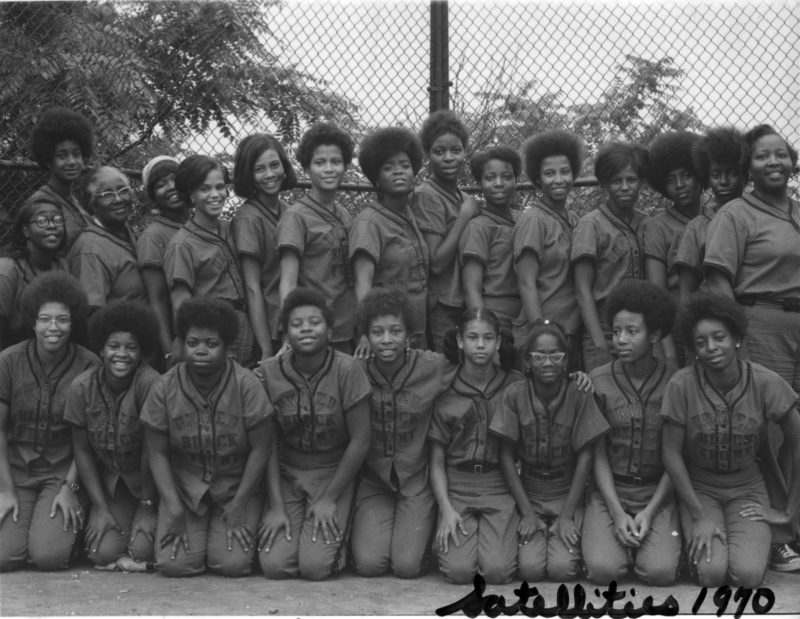
Softball Team
United Black Front (UBF) Softball Team
The United Black Front (UBF), the team’s sponsor, was formed in 1968 following both national and local outbreaks of violence, and was headed by civil rights activist Clyde Jackson. Through economic development grants dedicated to the Hill District, the UBF established a community food mart, the only black-owned nail factory in the country, and job training programs, including business education for running the food mart.
Music and Art
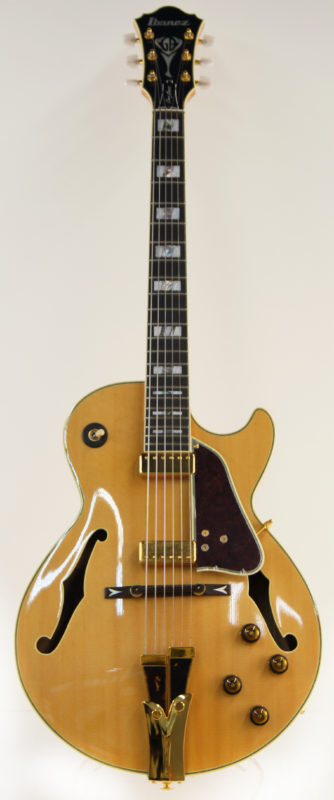
Guitar, 1980s, Senator John Heinz History Center, Gift of George Benson, 2004.48
Guitar, c. 1980s
This guitar belonged to jazz and pop musician George Benson. An eight-time Grammy Award winner, Benson is known as one of the best jazz guitarists of his time. Born in Pittsburgh’s Hill District, Benson began singing in local nightclubs when he was eight years old, and picked up the guitar soon after. He graduated from Schenley High School in 1958, and shortly after began playing professionally in Jack McDuff’s band. This Ibanez guitar, model GB10, was made exclusively for Benson in Japan. It has his signature and initials on the neck-head.

